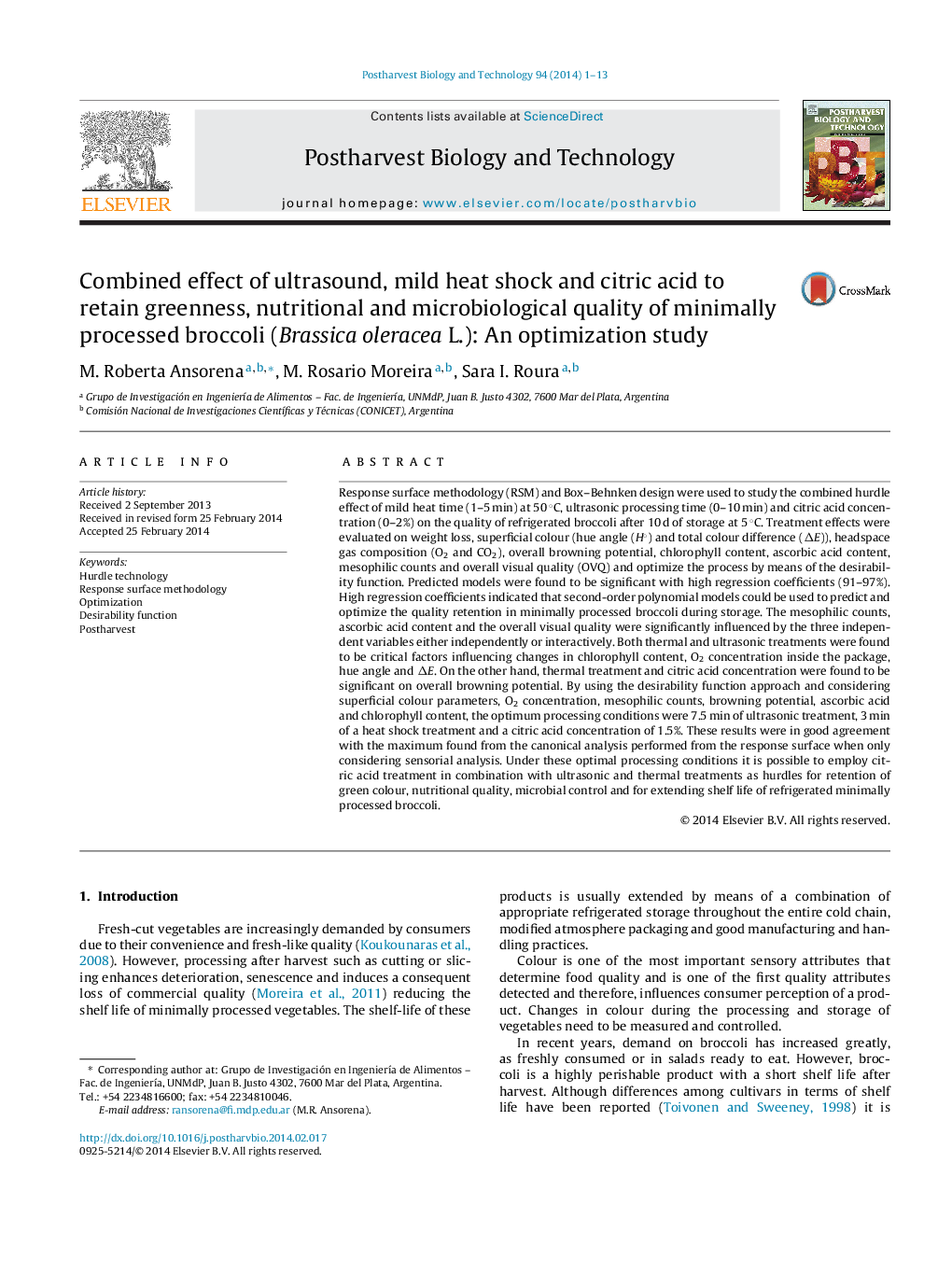| کد مقاله | کد نشریه | سال انتشار | مقاله انگلیسی | نسخه تمام متن |
|---|---|---|---|---|
| 4518273 | 1625000 | 2014 | 13 صفحه PDF | دانلود رایگان |

• Combined hurdle effect of different treatments on quality of broccoli was studied.
• Applied treatments were ultrasonic, heat treatment and citric acid.
• Response surface methodology was used for modelling and optimization of quality.
• Colour, nutritional, microbiological and overall visual quality was evaluated.
• Optimum treatments were 7.5 min (ultrasound), 3 min (heat) and 1.5% (citric acid).
Response surface methodology (RSM) and Box–Behnken design were used to study the combined hurdle effect of mild heat time (1–5 min) at 50 °C, ultrasonic processing time (0–10 min) and citric acid concentration (0–2%) on the quality of refrigerated broccoli after 10 d of storage at 5 °C. Treatment effects were evaluated on weight loss, superficial colour (hue angle (H°) and total colour difference (ΔE)), headspace gas composition (O2 and CO2), overall browning potential, chlorophyll content, ascorbic acid content, mesophilic counts and overall visual quality (OVQ) and optimize the process by means of the desirability function. Predicted models were found to be significant with high regression coefficients (91–97%). High regression coefficients indicated that second-order polynomial models could be used to predict and optimize the quality retention in minimally processed broccoli during storage. The mesophilic counts, ascorbic acid content and the overall visual quality were significantly influenced by the three independent variables either independently or interactively. Both thermal and ultrasonic treatments were found to be critical factors influencing changes in chlorophyll content, O2 concentration inside the package, hue angle and ΔE. On the other hand, thermal treatment and citric acid concentration were found to be significant on overall browning potential. By using the desirability function approach and considering superficial colour parameters, O2 concentration, mesophilic counts, browning potential, ascorbic acid and chlorophyll content, the optimum processing conditions were 7.5 min of ultrasonic treatment, 3 min of a heat shock treatment and a citric acid concentration of 1.5%. These results were in good agreement with the maximum found from the canonical analysis performed from the response surface when only considering sensorial analysis. Under these optimal processing conditions it is possible to employ citric acid treatment in combination with ultrasonic and thermal treatments as hurdles for retention of green colour, nutritional quality, microbial control and for extending shelf life of refrigerated minimally processed broccoli.
Journal: Postharvest Biology and Technology - Volume 94, August 2014, Pages 1–13